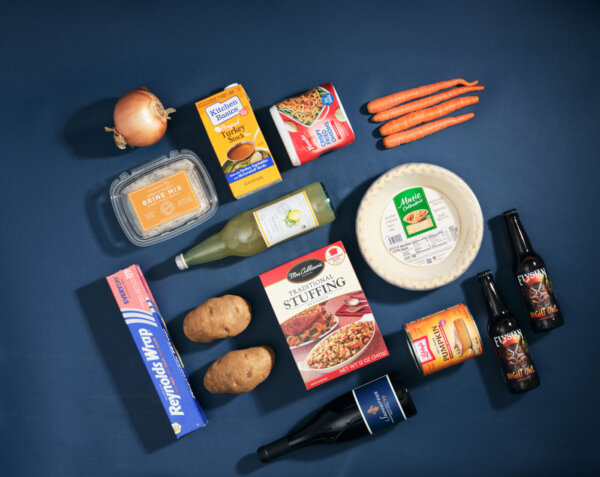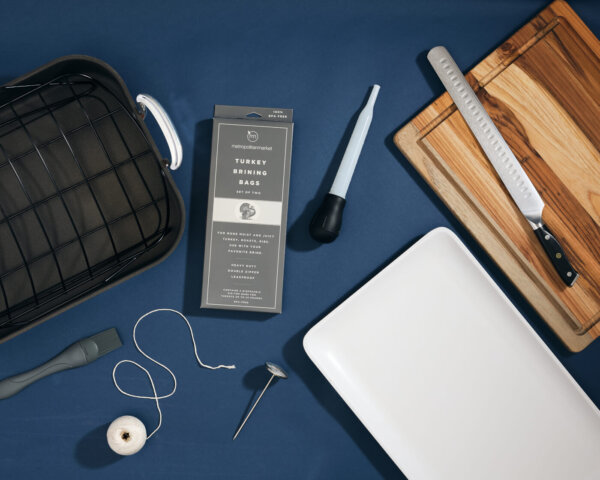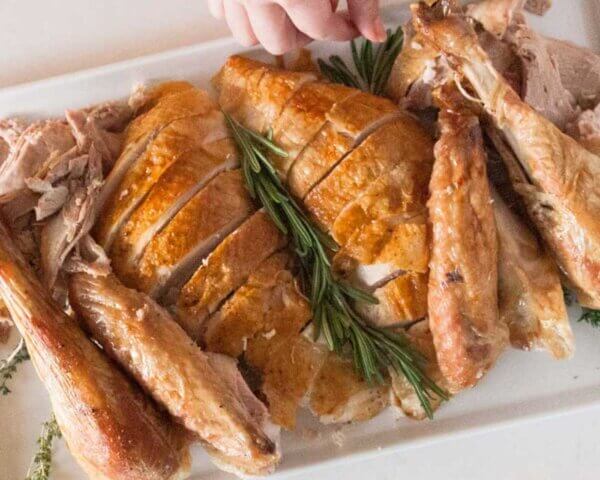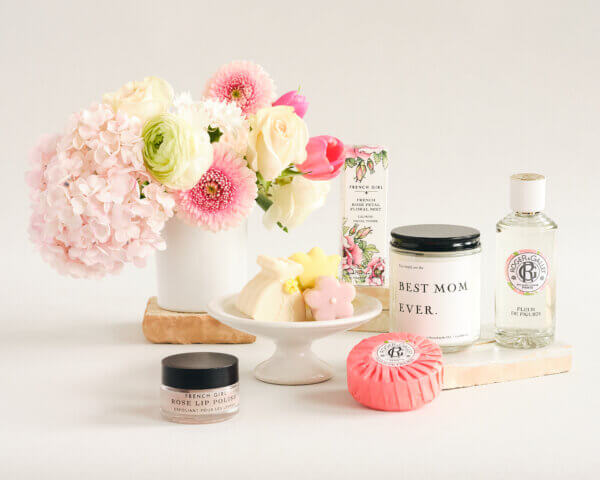101
There’s more to hosting dinner guests than just planning and preparing a meal. You’ll save yourself some last-minute stress if you consider not just what to make, but how you’d like to present it. It’s a treat for guests to be greeted with a beautiful table; and while they may not recognize the forethought given to the presentation and flow of the meal service, the advanced preparation will definitely help you to more fully enjoy the party.
A Casual Affair

Whether you’re hosting a Friendsgiving potluck or having a large group over that you’ll be serving buffet-style, here are some tips to help you get ready in advance.
- Place a stack of plates at the beginning of the line but put eating utensils at the end. Your guests don’t need to fiddle with forks and napkins while trying to serve themselves. Tying utensils and napkins into bundles also makes it easier to carry them while holding a full plate. Using a piece of twine or colored ribbon can add to the festive feel. Extra napkins and utensils can also be placed at seating areas.
- Consider using small boxes, overturned bowls, and square vases of varying heights as pedestals for serving dishes. This not only adds interest to the buffet but enables you to fit more platters on it. The serving dishes on the surface tuck under the edges of ones placed above them. A large cloth can cover the entire buffet and be tucked around the pedestals to hide them from view.
- Lay out serving platters you intend to use and label them with their intended contents. Leave labels in spaces for items being brought by your guests. Set out serving utensils that correspond with each dish — tongs for a salad (much easier than utensils that require two hands), large spoon for cranberry sauce, a ladle for gravy, etc. If guests will approach the buffet from two sides, consider putting out two utensils for each dish, one facing each direction.
- Thoughtfully consider the placement and progression of menu items. I like to put heavy starches at the beginning of the line — rice, potatoes, and stuffing. Follow that with meats and hot sides which can be placed on top of the starches — something a smart guest will do to conserve precious space on their plate! At the end of the line, put out salads and rolls that are better off unburied by everything else.
- Be mindful of guests with dietary restrictions. Consider making labels which identify each dish or ones that call out whether it contains gluten, nuts, pork, or dairy. If you know that someone is particularly sensitive to an ingredient, it’s nice to set their food aside in a different area altogether.
- Plan for the transition to dessert. If you have the space to set up a separate area for dessert, follow the same guidelines of using various heights, setting out serving utensils, and having plates, napkins, and forks all ready to go. Think about having coffee and tea service set up as well. If you don’t have space to set this up from the onset, have containers on hand to quickly pack up dinner leftovers so that you can quickly clear the buffet and re-set for dessert.
A Plated Dinner
Many families I know eat their meals casually around the kitchen island, sitting on the couch in front of the TV, or in shifts as family members come and go to various activities. Forgoing regular sit-down meals around the family dinner table has contributed to many people not knowing how to properly set a table. If this includes you, here are the basics, along with a few tips for dressing things up.

- If using a placemat, a charger belongs in the center, an inch up from the edge of the table. By the way, it’s okay to use a placemat on a tablecloth — as long as there is sufficient room on your table to allow for adequate space between settings.
- Whoa, back up! What’s a charger? A charger is basically a placeholder for your dinner plate. It serves as a base for a salad plate or soup bowl but is removed prior to the main course in exchange for the dinner plate.
- Flatware should be evenly spaced apart with their bottom edges even with the bottom edge of the charger. Forks go on the left of the charger. Salad forks belong on the outside, and dinner forks are placed on the inside, right next to the charger. (Work your way from outside in when faced with multiple utensils.) Knives are set to the right of the charger, edge facing inward. Spoons belong to the right of the knife (only put them out if there is a need for them). Dessert forks (handle to the left) and coffee spoons (handle to the right) are placed above the charger or brought out after dinner.
- A folded napkin or one in a napkin ring can either be placed atop the charger or to the left of the outermost fork.
- Bread plates are placed to the upper left of the charger and drink glasses are placed to the right, above the knife. If you make circles by holding your thumbs and forefingers together, your left hand will form a “b” and your right hand will form a “d.” This helps to remind you that bread goes on the left and drinks go on the right.
- Water and wine glasses can either be placed in descending order of size at a 45° angle beginning atop the knife or clustered above the knife and spoon.
- Name cards are set above the charger and dessert utensils. They can also be incorporated into individual decorations at each place setting — tied to a napkin ring or written on a mini pumpkin, for example.
- In your kitchen, have stacks of salad plates, soup bowls, dinner plates, and dessert plates ready and waiting. If there’s adequate space, lay out the plates for each next course to make it easier to portion out the food and ensure that each plate receives every component.
- Options for table décor are endless and fun. Just remember not to use fragrant flowers or scented candles as they can interfere with the taste of the food. Keep centerpieces low so they don’t block eye contact across the table.
A Family-Style Meal

While a tablescape can be fun to arrange, it often precludes you from having space to place food platters on the table. A sit-down meal in which menu items are passed around (often referred to as “family-syle”) is great for entertaining guests in a less formal way than a plated dinner. Here are some things to consider when setting the table, which can — and should — be done well in advance to get ahead of schedule.
- Instead of multiple decorations which can occupy valuable space, consider a pretty table runner or a string of fairy lights that can weave around serving platters.
- As with preparing a buffet, set out serving platters and utensils and label them with their intended contents. Be sure they aren’t too large and heavy to pass around the table. Consider having duplicates of everything on smaller serving dishes, one for each side of a long table.
- Chargers may still be used for decoration but are unnecessary when setting the table as dinner plates can be set out from the start.
- Consideration should be given to the best seating arrangement around the table. As the host, I like to sit near the kitchen where I can easily pop up and grab things if needed. I’m mindful of placing older folks away from drafts and in places to which they can walk easily. It’s okay to sit couples apart and intersperse children rather than relegating them to a separate table. These events can be great for inter-generational connections!
Regardless of how you serve your meal and the level of formality you choose, the most important thing a host can do is to be at ease. It will be difficult for guests to enjoy the evening if you look exhausted and stressed. Do your best to plan ahead and take care of what you can in advance, but remember that ultimately, the point is to share a memorable evening with friends and family — and this isn’t at all dependent on what your table looks like!





